
Susan B. Anthony lived and worked as a teacher when women were paid less for the same jobs performed by men and could not vote in any election. Her work and perseverance helped change the entire country and is presented in accessible language and simple illustrations that evoke the period. Resource notes are included.
Susan B. Anthony

Rachel Carson was a shy child, always drawn to nature. She grew up to become a professional biologist and enter a field with few women and write a book that changed the way people looked at the environment. Soft, cartoon-like illustrations and straightforward narrative present an overview of Carson’s life; sources are included at the end.
Rachel Carson and Her Book that Changed the World
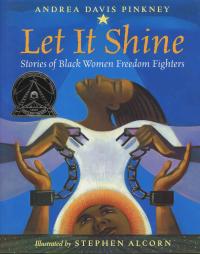
Brief sketches of the lives of both well (e.g. Harriet Tubman) and lesser known African American women (e.g., Biddy Mason) and their impact on civil rights are presented in the lively language of a storyteller sure to read aloud well. Vibrant, stylized Illustrations enhance the evocative text to complete the thought-provoking portraits.
Let It Shine: Stories of Black Women Freedom Fighters

Juliette “Daisy” Gordon was born into a family of pioneers, she loved the outdoors, and yearned to make a difference in the world. Combining her passion for service with her own adventurous spirit and her belief that girls could do anything, she founded the Girl Scouts. March 2012 is the 100th anniversary of the Girl Scouts and they’re still going strong, with more than 3 million Girl Scouts throughout the world!
Here Come the Girl Scouts

Emily’s dog, Carlos, accompanied her almost everywhere, “decorating her clothes with dog hair” even when she wrote. Rich narrative sprinkled with quotes from Emily Dickinson’s poetry and letters combines with expressive watercolors for a unique portrait of the poet. Additional information and sources complete this handsome book.
Emily and Carlo

Roosevelt’s own words define her growth from a shy child to reluctant but forceful political voice to respected citizen of the world. Evocative illustrations express Roosevelt’s strength and unique beauty.
Eleanor, Quiet No More

Room with a Zoo
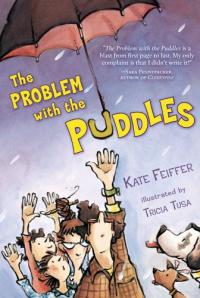
The Problem with the Puddles

My Side of the Car
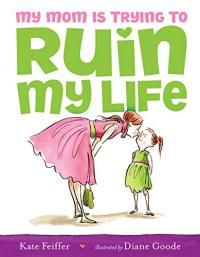
My Mom Is Trying to Ruin My Life

Absorbed in his book, a child ignores his mother’s persistent calls, creating his own outrageous, imaginative adventures with the use of the word “meanwhile…” Wit and ingenuity abound in text and illustration until the boy’s adventures — and the book — conclude.
Meanwhile…

Man in the Ceiling
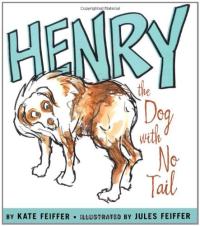
Henry the Dog with No Tail

When George can’t bark like most puppies, his mother takes him to the vet who also tells George to “bark!” An exhausted doctor literally pulls out the reasons George “meows” and more with funny and surprising results. Spare, comic line drawings add to the silliness.
Bark, George
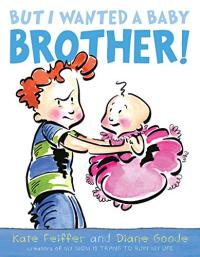
But I Wanted a Baby Brother!

A young Frederick Douglass narrates this handsome, moving, and authentic story of his early life as a slave, his desire to learn, and plans to escape slavery. The child who grew up to be an abolitionist, memorable writer, and orator knew that words — reading — would set him free.
Words Set Me Free: The Story of Young Frederick Douglass

Belle goes with her talented grandmother on a singing tour during a time of racial segregation in the south in the 1950s. Grandmama decides to continue performing up north “where things were a little easier for black people.” Realistic watercolors help define the setting.
When Grandmama Sings

Two children aroused by their parents join a march for equal rights. Short sentences and semi-abstract illustrations convey the children’s evolving feelings as they join scores of others in what adults recognize as an historic march for civil rights.
We March

Brief, staccato text and dark-hued, mixed-media illustrations convey the drama of enslaved people escaping on the Underground Railroad. There is limited light and grave danger until the family reaches freedom in this seemingly simple yet rich and sophisticated book.
Underground

Martin Luther King’s niece recalls how the power of her uncle’s words and his strength of conviction changed the United States. Realistic illustrations, straightforward language, and factual back matter create an accessible glimpse of the man and his place in history.
My Uncle Martin’s Words for America

Sophisticated poems, often in dialect, are accompanied by haunting paintings to chronicle a group of enslaved people escaping north to freedom. Older readers will most appreciate this sometimes (necessarily) harsh portrait of escape, slave trackers, and the trek north.
Freedom’s a-Callin Me
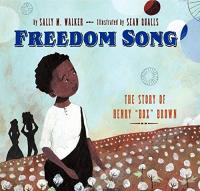
His unusual escape from slavery — in a box mailed to Philadelphia — is told in a conversational, folksy style illustrated with evocative illustrations. The cadence of the text calls to mind the music and song that were always important to Henry Brown.
Freedom Song! The Story of Henry “Box” Brown

Dear Primo

